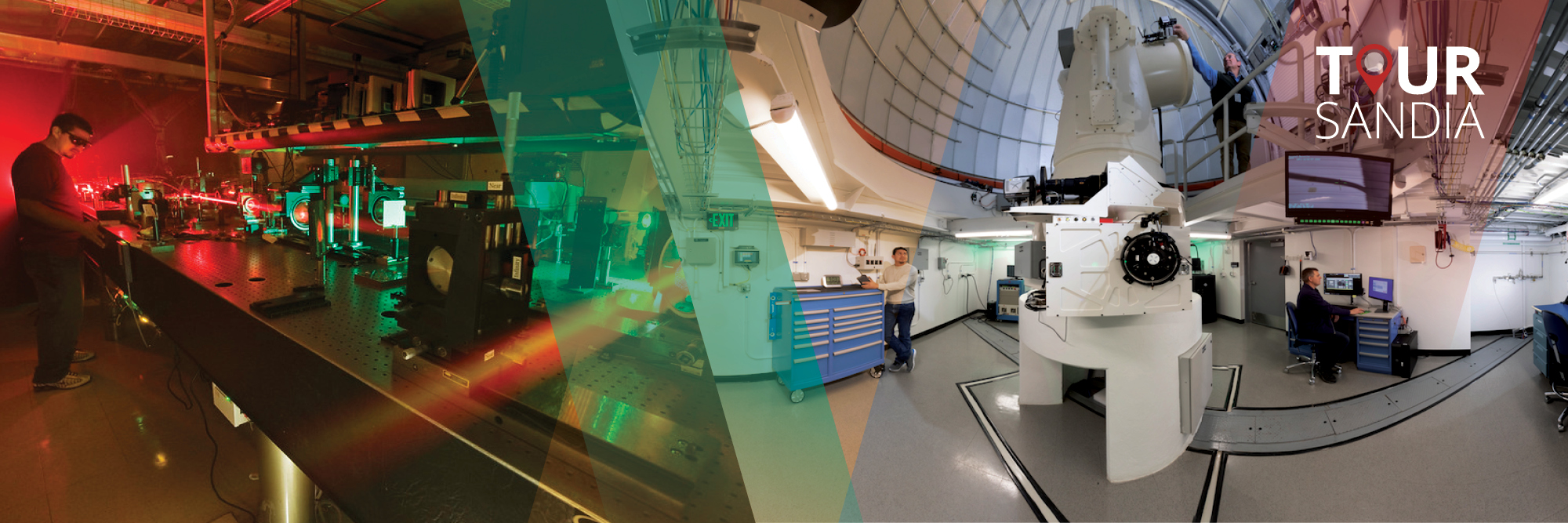Overview
Sandia's Laser Applications facility, called LAZAP, plays a vital role in testing and calibrating U.S. reconnaissance and Global Positioning System (GPS) satellites. The facility houses high-powered lasers that are propagated into space to illuminate optical sensors on the satellites and ensure that they and their associated electronics are working properly.
LAZAP was built in the 1970s to provide calibration data for the Vela satellite constellation. Sandia, with Los Alamos National Laboratory, developed the Vela satellites to detect nuclear detonations to monitor compliance with the 1963 Partial Test Ban Treaty. The Vela satellites flew from 1963 until the mid-1980s when test ban treaty monitoring was shifted to other systems.
LAZAP's capabilities are now used with more advanced sensors hosted on GPS and Defense Support Program satellites. As part of the United States Nuclear Detonation Detection System, these systems monitor the Earth for nuclear detonations, providing real-time information about potential activity to U.S. policymakers and the Department of Defense. The Global Burst Detector (GBD) payloads on GPS III satellites are the most recently deployed systems, with the first launch occurring in 2018 and subsequent launches continuing until 2023.
